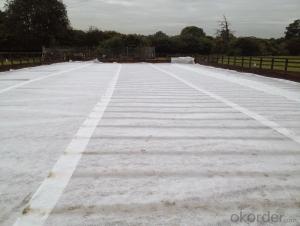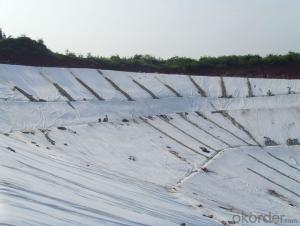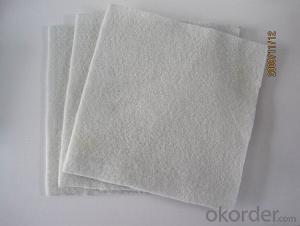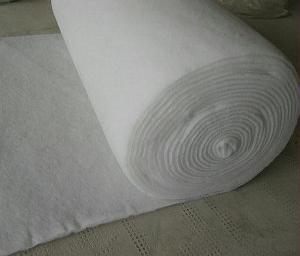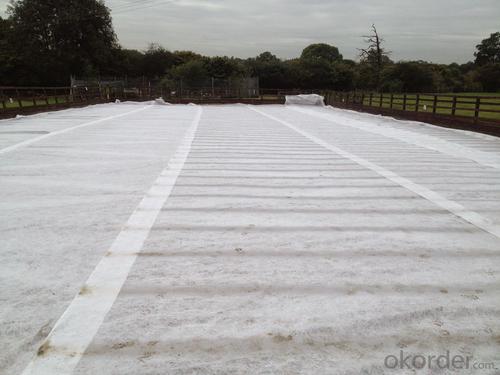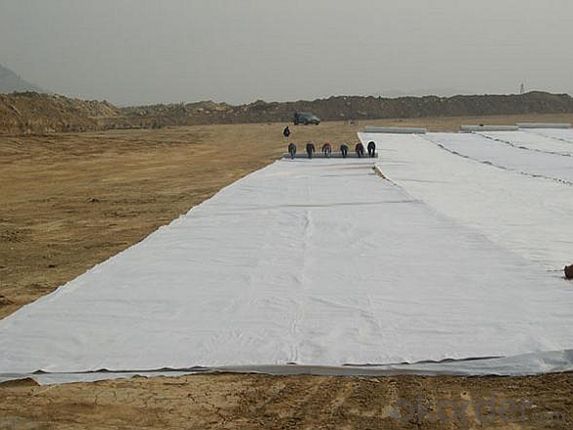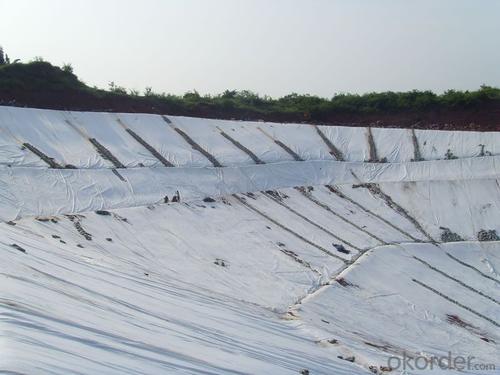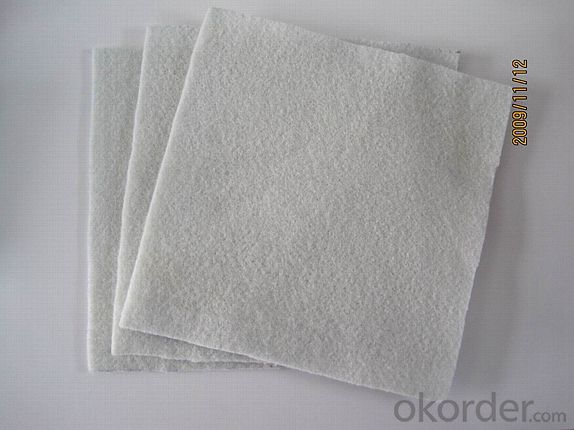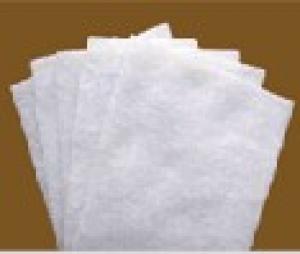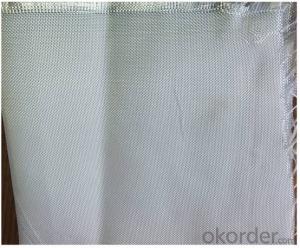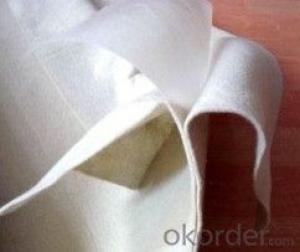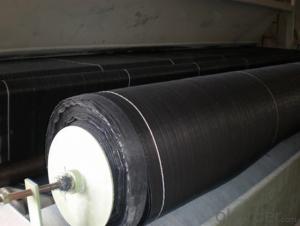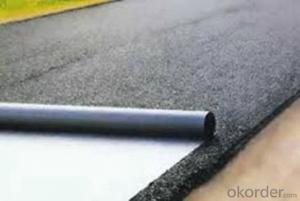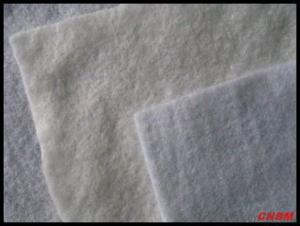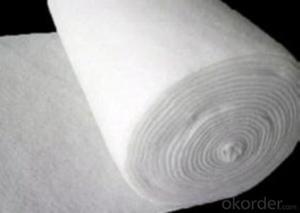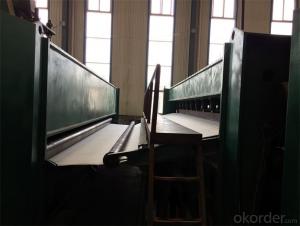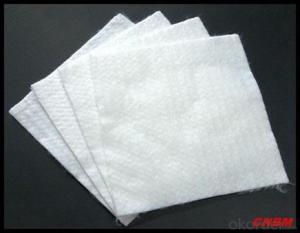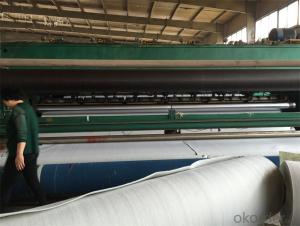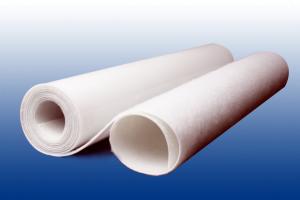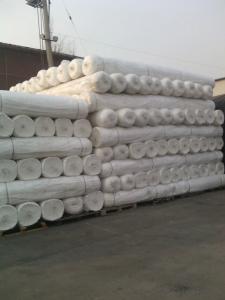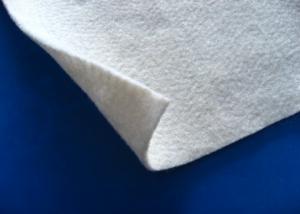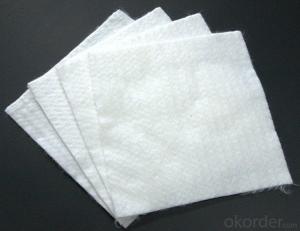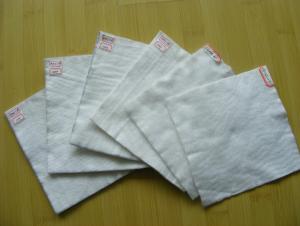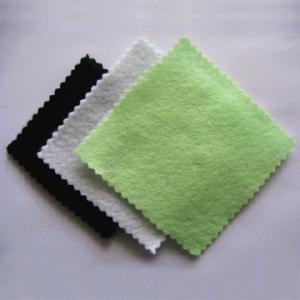Woven Geotextile Filament Spunbond Nonwoven Geotextile Products with Highest Quality
- Loading Port:
- China main port
- Payment Terms:
- TT OR LC
- Min Order Qty:
- 1000 m²
- Supply Capability:
- 10000000 m²/month
OKorder Service Pledge
OKorder Financial Service
You Might Also Like
Non-Woven Geotextile Functions
Filtration: Civil non-woven geotextiles filter soil particles while allowing excellent water permittivity for structures requiring drainage.
Erosion Control: They can provide erosion control structures with stabilization and filtration.
Reinforcement / Stabilization: Civil non-woven geotextiles filter soil particles while allowing excellent water permittivity for structures requiring drainage.
Geotextiles are permeable fabrics which when used in association with soil, have the ability to separate, filter, reinforce, protect or drain.
Geotextile uses
Protection: Geotextile when used as a protection layer acts as a cushioning barrier between the geosynthetic lining system and other layers of the dam or landfill cell. Generally the larger mass rolls of geotextile provide the best cushioning protection. As a protection barrier it helps prevent puncturing and leaks from external forces coming into contact with the liner.
Our Service
1.On a regular basis or as per your request,we entrust national testing agencies to conduct quality inspections
2. Strictly in accordance with the ISO9001-2008 international quality system standard,we monitor and manage the whole process throughout production,quality testing,and measurement to ensure product quality
3. For quality-related construction delay or substandard construction(except for damage or losses due to customer’s responsibility or irresistible natural disasters),we have refunding,replacement,and repair services.We will respond to customers’ feedbacks on quality issues within 24 hours.
4.In order to provide customers with comprehensive technical support,we will provide technical and other related information upon request in a timely manner.
5.In required,we will appoint specialized technicians to the construction site to give technical trainings to construction people,and offer technical guidance throughout the whole construction process.
6.For damage due to shipment and delivery,after we receive the complaint,we will check the issure through provided pictures and videos.If our responsibility is confirmed,we wil offer free replacement.
7.When the construction is completed,as your request,our technical staff may participate in the final acceptance.
FAQ:
Q: What kind of payments does jenor support?
A: T/T, L/C, Cash are accepted.
Q: Do you charge for the samples?
A: Accordeing to our company policy, the samples are free, we only charge the freight fee. And we will return the freight fee during the next order.
Q: Can you produce according to customers' design?
A: Sure, we are professional manufacturer, OEM and ODM are both welcome.
Q: Do you have other products?
A: Yes, please check the pictures:
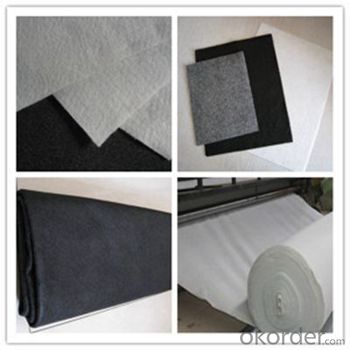
- Q: How do geotextiles contribute to soil reinforcement?
- Geotextiles contribute to soil reinforcement by providing a stable and durable layer that prevents soil erosion, improves soil stability, and enhances load-bearing capacity. They act as a barrier against soil movement, distribute loads more evenly, and increase the overall strength of the soil. Additionally, geotextiles allow for better water drainage, reducing the risk of water accumulation and weakening the soil.
- Q: How do geotextiles help in preventing erosion around culverts?
- Geotextiles help in preventing erosion around culverts by acting as a barrier between the soil and water flow. They provide stability and reinforcement to the soil, preventing it from being washed away. Additionally, geotextiles help filter out sediment and prevent clogging of the culvert, ensuring proper water flow and reducing the risk of erosion.
- Q: Geotextile what are the specifications of the ah?
- Geotextile is first divided into short wire geotextile and filament geotextile. Their specifications generally according to the weight to count, small equipment, geotextiles are mostly between 80g-380g, and now some mature domestic enterprises generally can do between 100g-1500g short wire and filament geotextile. How many grams of this can be customized between. It should be noted that the same specifications of the short wire geotextile price than the filament geotextile to 30% cheaper, but the technical strength index than the long geotextile cloth nearly 50%.
- Q: Geotextile longitudinal and lateral elongation gap is too much how to adjust
- 1. The elongation at break of the geotextile is divided into longitudinal elongation at break and transverse elongation at break. Generally speaking, the elongation at longitudinal and transverse faults is not very different. GB GB / T-2008 standard requirements geotextile longitudinal and lateral elongation between 20% -100% are qualified. 2. Longitudinal transverse fracture elongation gap is too large, you can check the mixing hopper, carding machine is mixed evenly, combing evenly. 3. Acupuncture machine too fast or too high acupuncture may lead to geotextile longitudinal and transverse elongation gap, you can try to debug the speed of the next needle machine. 4. Appropriate to add some industrial oil can enhance the geotextile rupture strength, and elongation at break.
- Q: What are the factors to consider when selecting geotextiles for a specific project?
- When selecting geotextiles for a specific project, there are several factors to consider. These include the project requirements and objectives, the type and intensity of loads the geotextiles will be subjected to, the site conditions and soil characteristics, the desired lifespan of the geotextiles, and the environmental considerations. Additionally, factors such as the cost, availability, and compatibility with other materials should also be taken into account.
- Q: Do geotextiles require regular maintenance?
- Yes, geotextiles generally require regular maintenance to ensure their effectiveness and longevity. This may include inspecting for any damage or wear, removing any debris or vegetation that may accumulate on the surface, and addressing any soil erosion or drainage issues that may arise. Regular maintenance helps to preserve the integrity and functionality of geotextiles in various applications such as erosion control, filtration, and stabilization.
- Q: Do geotextiles affect soil pH levels?
- No, geotextiles do not affect soil pH levels.
- Q: Geotechnical deployment of aging detection of what indicators
- Geotextile aging test: anti - ultraviolet ability. That is, at a certain temperature, the sun under the strong changes in geotextile.
- Q: Can geotextiles be used in geotechnical engineering?
- Yes, geotextiles can be used in geotechnical engineering. Geotextiles are commonly used in geotechnical engineering for applications such as soil stabilization, erosion control, filtration, drainage, and reinforcement. They provide various benefits such as improved soil strength, increased load-bearing capacity, and enhanced drainage capabilities. Geotextiles are versatile and widely employed in a range of geotechnical projects, including road construction, retaining walls, landfills, and slope stabilization.
- Q: What are the design considerations for geotextile-reinforced retaining walls?
- The design considerations for geotextile-reinforced retaining walls include factors such as the type and strength of geotextile material, soil characteristics, wall height, slope stability, drainage system, and construction techniques. These considerations are important to ensure the stability, durability, and functionality of the retaining wall.
Send your message to us
Woven Geotextile Filament Spunbond Nonwoven Geotextile Products with Highest Quality
- Loading Port:
- China main port
- Payment Terms:
- TT OR LC
- Min Order Qty:
- 1000 m²
- Supply Capability:
- 10000000 m²/month
OKorder Service Pledge
OKorder Financial Service
Similar products
Hot products
Hot Searches
Related keywords
